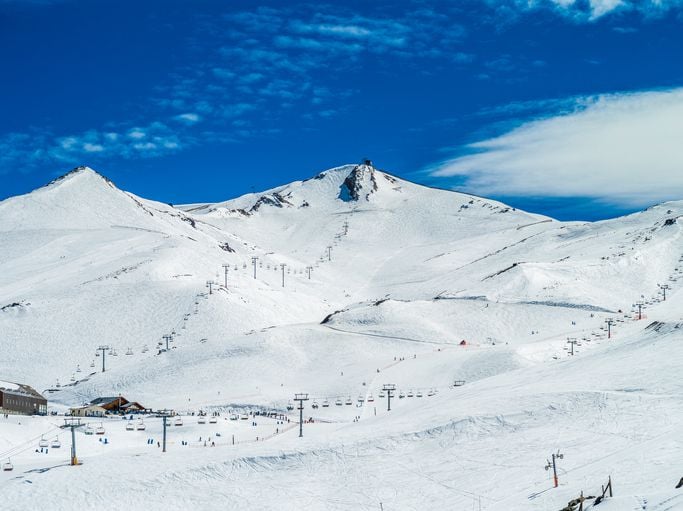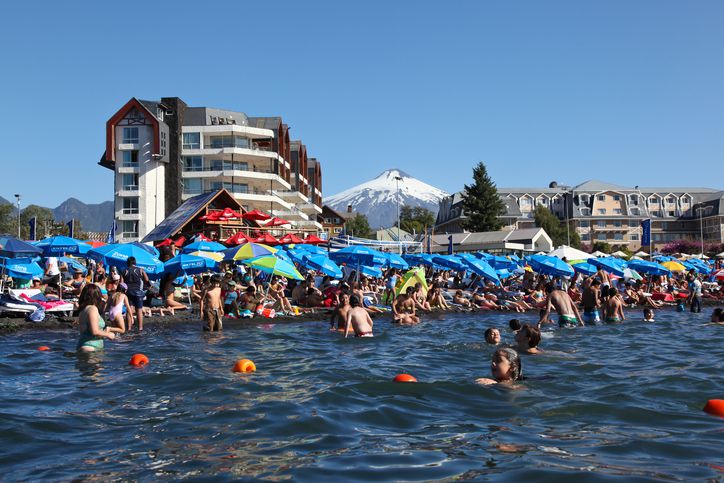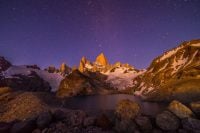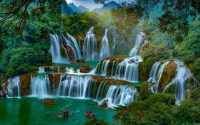If you’re planning a vacation to Chile, the good news is that with seven major climate types, ranging from low desert in the north, Mediterranean in the central regions and glaciers further south, there is never a bad time of the year to visit. But to ensure that the Chile climate of the region you’re touring is at its prime, we’ve put together a guide to the weather to expect in each of the country’s main areas.
Be aware that summer runs in Chile between December and February – the high season for tourism – however climate conditions do vary tremendously across the country.
The north and central regions of Chile are where the most predictable and pleasant weather systems are found throughout the year, while the south and particularly Chilean Patagonia are best visited during the warmer, drier months.
Northern Chile climate
Atacama
As the driest place on earth, you’d be very unlucky (depending on your perspective) to see a rainy day in the Atacama Desert. In fact, some parts of the desert are believed to have not seen rain for hundreds of years.
- Expect an arid climate, with sunshine and cloudless days throughout the year.
- Temperatures are hot and stable aross the year with daytime temperatures between 68°F and 77°F (20°C-25°C) r.
- Be aware that at night time, the area’s high-altitude location causes temperatures to sink to 48°F (9°C) in summer and a chilly 34°F (1°C) in winter.
Best time to visit: All year round. Tourist numbers are lowest outside of the summer months and the cooler daytime temperatures experienced during the rest of the year are preferable if you have a low tolerance for heat. Whenever you visit, bring layers to keep you warm during cold evenings.
Iquique and Antofagasta
These beachside locations have some of the most predictable and warmest weather throughout the year.
- Beachside locations such as Iquique and Antofagasta have warm temperatures that average between 68°-77°F (20°-25°C) in summer.
- During winter, they rarely reach lower than 57°F (14°C).
- Antofagasta has an average rainfall per year of only 1 mm so it’s also very unlikely you will see rainfall.
Best time to visit: All year round, although beach goers will find the temperatures more pleasant during the summer. Be aware that the Pacific Ocean is very cold, whatever the season.
Central Chile climate
Santiago, Valparaíso, Viña del Mar
With its Mediterranean climate, summers in the capital, Santiago are scorching, while winters are mild and experience some rainfall and a good dusting of snow in the mountains. During the hottest weather, coastal Valparaíso and Viña del Mar are excellent antidotes to the dry heat of the capital, as the cool breeze from the Pacific Ocean offsets the fierceness of the sun.
Santiago
- In summer, daytime temperatures can hit up to 95°F (35°C) and public transport around the city can be sweltering.
- Locals take their holidays and leave the capital during January and February, so Santiago is quieter and calmer for these months than during the rest of the year.
- In winter, expect some rainfall and mild temperatures.
- High levels of smog are an issue outside of the summer, so escape by heading into the mountains to ski.
Valparaíso and Viña del Mar
- Highs of 72°F (22°C) are to be expected between January and February while mild, cooler temperatures of around 59°F (15°C) are normal during winter.
- This climate is pleasant for enjoying the sunshine and the region’s beautiful sandy beaches.
Best time to visit: Shoulder seasons and summer when warm temperatures and low rainfall make this part of Chile ideal for visitors. During winter, nearby ski resorts see some of the best snow in the country.
Lake District climate
Pucon, Puerto Varas
A region of huge lakes and leafy, Valdivian temperate rainforest, it should come as no surprise that rainfall should be expected here throughout the year.
- Being further north than the more extreme climate of Patagonia means that the Chilean Lake District can be visited year round – just bring a waterproof!
- Winter months are ideal for skiing, while summer months can are more likely to guarantee clear skies for hiking and other outdoor activities as well as warmer weather for relaxing on the black sand beaches of Lake Villarica.
Best time to visit: Year round, although rain is more prevalent outside of summer.
Southern Chile climate/Patagonia
 Most visitors to Patagonia arrive between December and March, as weather is more dependable, drier and warmer during this time, making it ideal for the hikes and other outdoor activities that are widespread across the region.
Most visitors to Patagonia arrive between December and March, as weather is more dependable, drier and warmer during this time, making it ideal for the hikes and other outdoor activities that are widespread across the region.
- Temperatures range significantly between Puerto Montt in the North and Punta Arenas in the south, so you should expect to experience all types of weather during your visit.
- The shoulder months of November, April and May are good times for visiting if you’re seeking to pay reduced prices for accommodations.
- In the winter, weather can change dramatically, with heavy rain, snow and fierce winds in the far south.
Best time to visit: Shoulder seasons and the summer months when hiking and outdoor activities are at their best. Whenever you visit, bring layers, a waterproof and decent hiking shoes to cope with different ground conditions.
No comments yet
There are no comments on this post yet.








Leave a comment